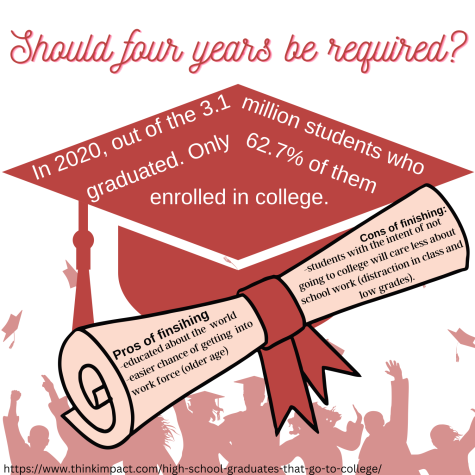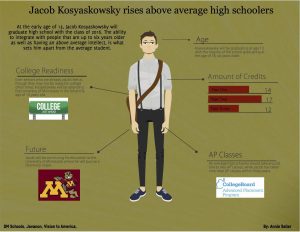Students should be required to complete high school

Despite the fact that not every student goes on to post-secondary education, there are still many predominant reasons to complete high school. Nationwide, out of the 2.7 million high school students who graduated in 2021, about 61.8% enrolled in college. This means 38.2% or about 1 million graduates had different plans after high school. Even though high school is main purpose is to prepare students for post-secondary education, there are many reasons as to why students should complete all four years of high school.
In total, there are around 1.2 million high school dropouts a year, out of that lot, only a few thousand become financially successful. This indicates that there is a chance that ending one’s high school career early may lead to success, but it is definitely not the most secure route to pursue.
Many students believe that “our brains are far from being fully developed” and there is still much to learn. The staff agrees that if given the choice, abandoning high school would be decided out of immaturity and lack of knowledge. Overall they stressed how important it is to stay in an environment of structure and education during such early years of development.
According to the University of Rochester’s health encyclopedia, the rational part of a person’s brain is not fully developed until around age 25. In teens’ brains, connections between the emotional parts and the decision-making center are still developing. This is why when teens have overwhelming emotions, they do not make well thought decisions. They were not thinking as much as they were feeling. This means making such an impactful decision at such a young age is not a very safe way to decide one’s future.
Staff also acknowledges that high school provides teens with structure and guidance during their most influential years. Due to their young age and lack of education, many employers will not seek out teens without a complete high school education. On that account, there would most likely be a large influx of unemployed teens running amok. This would be difficult to combat and may even require government intervention.
Unemployment rates for high school dropouts are usually four percent higher than the national average. Nearly half Americans who need public assistance are without a diploma. On average, the lifetime earnings of these individuals tend to be around $260,000 less than those who have graduated. Only bringing in around $25,000 annually, this is about $10,000 less than those with a diploma. These statistics exemplify the importance of attaining one’s diploma as well as showing how risky it is to drop out early.
High schools exist for a reason, to give young people the education they need to lead successful lives no matter what they pursue after school. The staff made sure to mention that completing one’s core credits throughout high school is important. We use that knowledge in everyday situations and will continue to use it into adulthood. Not only does high school provide the necessary education for practical situations, but most high schools also provide electives that help one explore their interests and potential.
For example, the high school provides a Pathways program that allows students to plan out and create their own “pathway” to follow throughout their high school career. The entire staff agrees that pathways has helped them shape not only their high school career but has even helped them decide what they want to do after high school.
High school provides students with the education and structure they need to become successful in the future. The four years students spend studying, learning and discovering are imperative to their success in the future.









